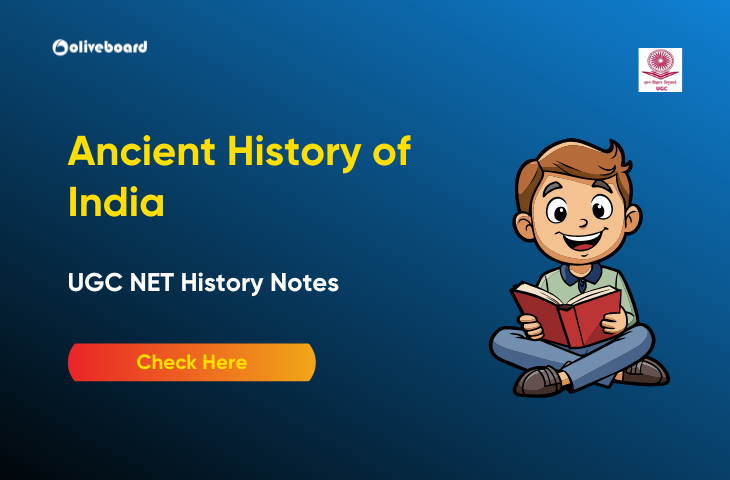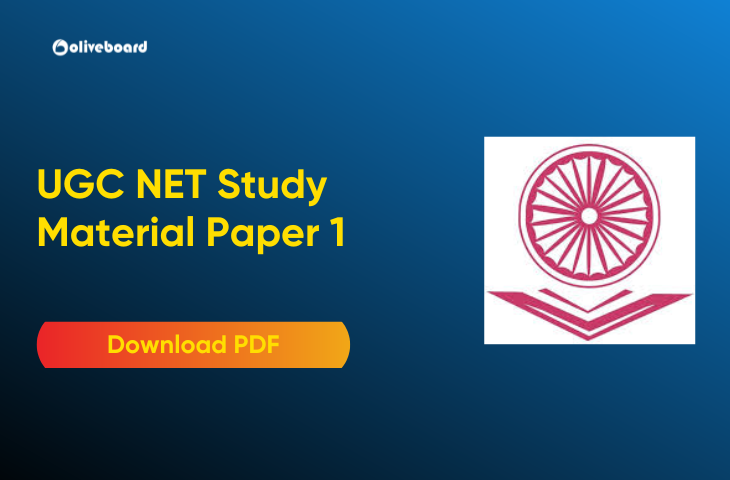Last updated on May 8th, 2025 at 07:12 pm
The UGC NET History notes for Ancient India covers key topics that are essential for students preparing for the exam. Ancient India syllabus includes information on archaeology, the Vedic period, the rise of social structures, and the emergence of new religious ideas. In this article, we will explain the key areas of the Ancient History of India syllabus in simple language to help you prepare for the UGC NET exam.
Click here for UGC NET History Notes Study Material PDF Download
1. Exploration and Excavation
Archaeological exploration and excavation help historians discover ancient sites, such as Harappa and Mohenjo-Daro. These sites give us information about the culture, lifestyle, and architecture of early civilizations.
2. Epigraphy and Numismatics
- Epigraphy is the study of inscriptions. These writings, found on stones and metal, reveal details about ancient languages, rulers, and religious practices.
- Numismatics involves the study of coins. Coins provide valuable insights into the economic systems, trade, and rulers of ancient times.
3. Dating of Archaeological Sites
It’s important to know how old an archaeological site is. Techniques like radiocarbon dating help determine the age of artifacts, enabling historians to create accurate timelines.
4. Indigenous Literature
Ancient texts like the Vedas, Upanishads, and epics such as the Mahabharata and Ramayana are primary sources of knowledge about ancient India. These works discuss religious, social, and political life.
5. Foreign Accounts
Ancient travelers such as Megasthenes and Fa-Hien visited India and wrote about their experiences. Their observations provide valuable information about India’s interactions with other cultures.
Early Societies and Development of Agriculture
1. Neolithic and Chalcolithic Periods
In the Neolithic period, people began to domesticate animals and grow crops. The Chalcolithic period saw the use of copper tools, which marked a significant technological advancement.
2. Settlement Patterns
Different regions of ancient India had unique settlement patterns. Some areas developed into small farming villages, while others grew into larger urban centers.
3. Tools and Trade
The tools used by ancient people, such as stone axes and pottery, tell us about their daily life and technology. Trade was essential for exchanging goods between settlements.
Indus Valley Civilization (Harappan Civilization)
1. Origin and Spread
The Indus Valley Civilization (3300–1300 BCE) was one of the world’s first urban civilizations. It covered parts of modern-day India, Pakistan, and Afghanistan.
2. Major Sites
Key sites of the Indus Civilization include:
- Harappa
- Mohenjo-Daro
- Dholavira
- Rakhigarhi
These cities were known for their advanced urban planning and architecture.
3. Craft Specialization and Trade
The Indus people were skilled in crafts like bead-making, pottery, and metalwork. They had an extensive trade network that reached as far as Mesopotamia.
4. Religion and Society
Although we know little about the religion of the Indus Civilization, the terracotta figurines and seals found at the sites suggest that fertility worship and other forms of ritual were important.
5. Decline of the Indus Civilization
Several theories explain the decline of the Indus Civilization, such as environmental changes, flooding, or invasions. However, the exact cause is still debated among historians.
Vedic Period (1500–500 BCE)
1. Early and Later Vedic Period
The Vedic Period is divided into two phases:
- Early Vedic Period: People lived a nomadic life, based on pastoralism (raising cattle).
- Later Vedic Period: Agriculture became more common, leading to the rise of villages and towns.
2. Aryan Debate
Historians discuss the origins of the Aryans, who composed the Rigveda. Some believe they migrated from outside India, while others argue that they were native to the subcontinent.
3. Political and Social Structures
During this period, monarchies emerged, and society became organized into the varna system (social classes). The Brahmins (priests) held significant power, followed by Kshatriyas (warriors), Vaishyas (traders), and Shudras (laborers).
4. Religious and Philosophical Ideas
The Vedas laid the foundation for Hindu philosophy. Religious practices revolved around sacrifices, and philosophical ideas about the soul (Atman) and universe (Brahman) were explored.
The Rise of States and Urbanization
1. Mahajanapadas
Around 600 BCE, large kingdoms known as Mahajanapadas emerged. These were powerful states like Magadha, Kosala, and Vatsa that controlled large territories.
2. Economic Growth and Urbanization
The use of iron tools revolutionized agriculture, leading to a boom in food production. This allowed for the rise of cities, marking the second urbanization in Indian history.
3. Heterodox Religions: Jainism, Buddhism, and Ajivikas
The rise of Jainism and Buddhism during this period offered alternatives to the Brahmanical religion. These religions emphasized non-violence, renunciation, and the pursuit of enlightenment. The Ajivikas were another important sect that focused on fatalism.
Expansion of Political Systems
1. Monarchical and Republican States
Some regions had monarchical states, ruled by kings, while others had republics where people played a role in governance. This diversity reflects the complex political landscape of ancient India.
2. Megaliths in South India
In southern India, the Megalithic culture developed, marked by large stone structures used for burial practices. These megaliths provide insights into the social and religious practices of the time.
Conclusion
The Ancient History of India offers profound insights into the country’s cultural, political, and social evolution, spanning from the Prehistoric period to the Gupta Empire and beyond. It highlights the achievements of the Indus Valley Civilization, the rise of Vedic culture, and the impact of Buddhism and Jainism on societal values. With contributions to philosophy, science, trade, and architecture, this era reflects the richness of India’s heritage. For UGC NET aspirants, understanding key themes like archaeological sources, dynastic administration, regional diversity, and economic systems is essential. Emphasizing critical keywords like epigraphy, numismatics, and literary sources aids in tackling analytical and conceptual questions, ensuring a comprehensive preparation for the History Paper.
FAQs
Ans: Ancient Indian History forms a foundational part of the syllabus, providing insights into cultural, political, and social developments crucial for understanding India’s past.
Ans: Important topics of Ancient Indian History include the Indus Valley Civilization, Vedic Age, Buddhism and Jainism, Mauryan and Gupta Empires, and sources like epigraphy and numismatics.
Ans: Questions are often based on chronology, features of civilizations, philosophical movements, and administrative systems.
Ans: An aspirants should use structured notes, focus on timelines, practice MCQs, and analyze key themes like urbanization, trade networks, and dynastic rule.
- The Companies Act, 2013, Important for SEBI, UGC NET, and Other Exams

- UGC NET Syllabus 2025, Paper 1, 2 PDF Download

- UGC NET Paper 1 Syllabus 2025 PDF Download [Official Link]

- Ancient History of India – UGC NET History Notes

- UGC NET Study Material Paper 1 PDF Download

- UGC NET Economics Preparation Strategy 2025


Hello there! I’m a dedicated Government Job aspirant turned passionate writer & content marketer. My blogs are a one-stop destination for accurate and comprehensive information on exams like Regulatory Bodies, Banking, SSC, State PSCs, and more. I’m on a mission to provide you with all the details you need, conveniently in one place. When I’m not writing and marketing, you’ll find me happily experimenting in the kitchen, cooking up delightful treats. Join me on this journey of knowledge and flavors!